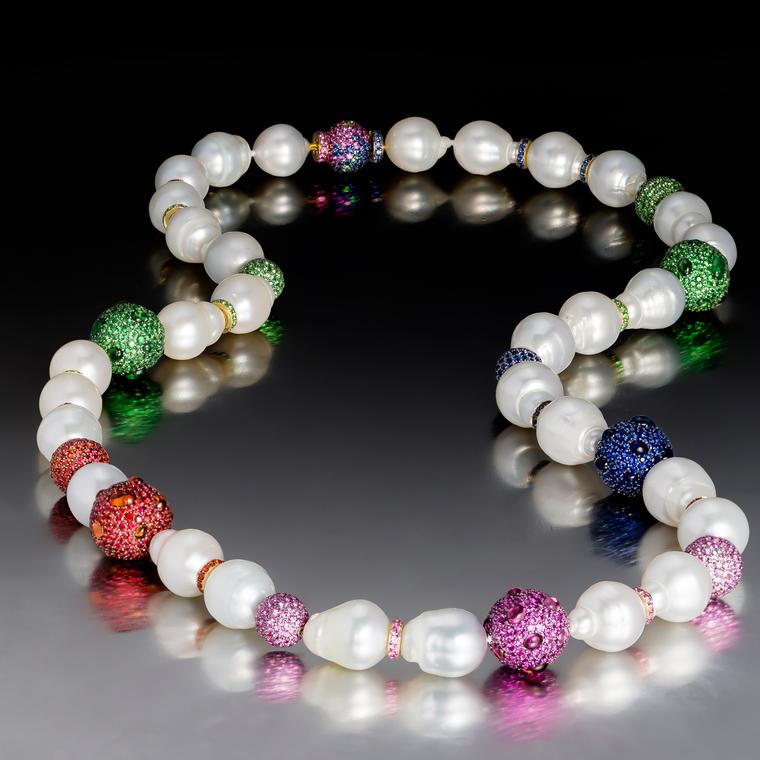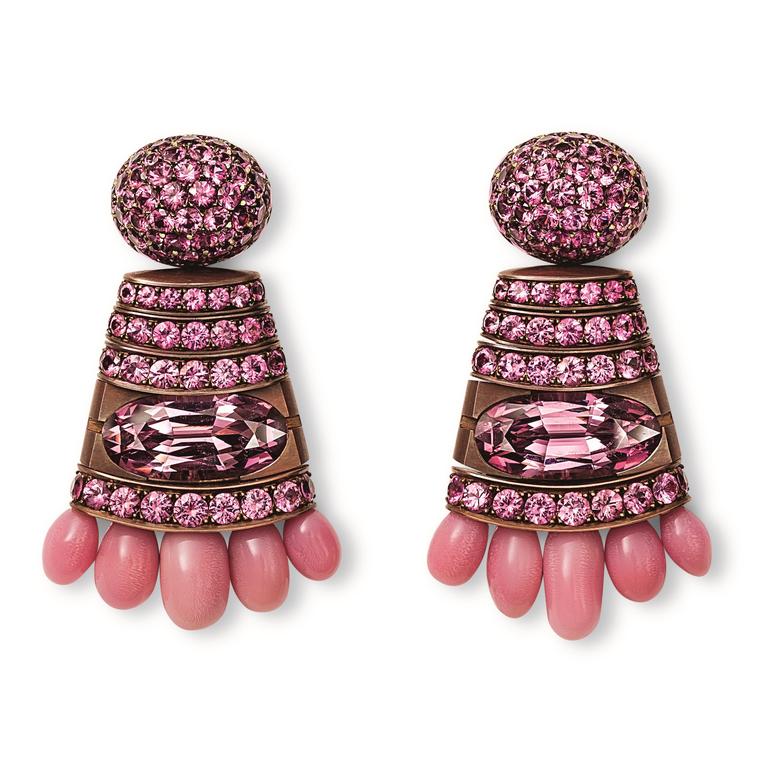What place do snowmen, peanuts, planets and quails’ eggs have in the world of fine jewellery? According to Margot McKinney - who likes to do things very much her own way - a very important one. Because Margot likes to mix up these kookily named varieties of pearls and gemstone elements with a large dose of vibrant coloured gemstones to create jewels that are brightening up the traditionally staid world of pearl jewellery.Margot’s confidence comes from being a fourth-generation jeweller combined with her first-hand knowledge of gems, especially those native to Australia: opals, pearls and pink diamonds. And a look at her latest baroque pearl collection illustrates her unique approach to making jewels with her signature self-confidence and joie de vivre.
Margot’s baroque pearl journey started with a phone call from an old friend Aji Ellies, who owns a pearl farm in the remote northern tip of Australia in a little-visited place near Gove in the Northern Territory. Aware of the enormous privilege bestowed on her, Margot embarked the very next day on a trans-continental journey of planes, buses, helicopters and boats to board the pearling mother ship at the height of the harvest.
Why Australian South Sea pearls?
Australian South Sea pearls are some of the best in the world. Known for the quality of their lustre, complexion, colour, shape and size, they range from 10mm – the size of a garden pea – to a maximum of 25mm. The white-lipped Pinctada Maxima, with a silvery white mother-of-pearl lining to its shell, is the only oyster that thrives in the seas around Northern Australia. As it is the colour of the mother-of-pearl that dictates the hue of the gem, Australian South Sea pearls are always white or lightly tinted silvery grey, which makes them easy to distinguish from black Tahitian, golden Philippine and Chinese sweet-water pink pearls.
What are baroque pearls?
Baroques are simply a misshapen nucleated pearl. The nucleus is an irritant inserted by technicians into the molluscs to prompt the animal to produce a pearl. As the mollusc rolls the irritant around to attempt to expel it, layers of nacre from the mother-of-pearl lining accumulate around the nucleus, creating a pearl. All this occurs in the dark depths of the sea as the oyster rests in its panel, tended-to by pearl farmers who clean off molluscs and algae and ensure they are in optimum health. No-one knows what each oyster will yield, so harvest time is full of anticipation and tension.
Traditionally, the most-prized pearls are perfectly spherical, but the swirling forms of the baroque are in demand once again. Not to be confused with keshi pearls – which, though also irregular shaped, are different as they are not nucleated but stowaways, created by chance naturally by the oyster and consisting solely of nacre – the appeal of baroque pearls is in their organic, irregular look. The antithesis of a traditional strand of perfectly matched round pearls, baroques are bursting with personality and individuality.
Always elegantly bejewelled, Margot watched first-hand as the dripping oyster panels were hauled from the sea to reveal their hidden treasures, two years in gestation. A two-day stay turned into a week as Margot became ever more entranced with the sea-rocked rhythm of life aboard a pearl harvesting boat in splendid isolation, with nothing but sharks and seagulls on the horizon. Making little stacks of baroque pearls that caught her eye, by the end of the week Margot had so many pearls that narrowing them down was impossible. So, with characteristic optimism, she bought every baroque pearl from the July 2016 harvest. And that is 85,000 pearls in total.

Fast forward to London in late November and Margot has arms full of her pearl necklaces that are brimming with life, colour and personality. “It was a piece of cake to design these jewels,” says Margot with a big smile. “The pearls each have their own personality, and they talk to me. We have lovely chats and the designs just flow on their own.” The “planets” are spinning orbs of rubies, tsavorites and pink and blue sapphires that punctuate long strands of popcorn-sized baroques to eye-popping effect. “I mix faceted stones with cabochons to create irregular patterns on the surface of the beads that echo the flowing forms of the baroque pearls,” explains Margot. “These earrings [above] are really wild – I mixed Australian Lightning Ridge opals with Australian South Sea pearls. I love the idea that one came from one of the harshest, driest environments in the world and the other from pristine seas.”
Of the 85,000 pearls, which Margot has sifted through many times, there were but a few dozen “snowmen”, or double pearls – enough for just two strands. Margot breaks up the “snowmen” with “planets” and “peanuts”, which are nubby nuggets of gold pavéd in diamonds and other gemstones, adding a frosty sparkle to the creamy lustre of the pearl. But prize of the catch is a 25mm quail’s egg-shaped silver-grey pearl, below. “I watched this being born on the 6 July and when it emerged, the entire boat erupted with joy. Pearls don’t get much better than this.”
Margot wants us to wear pearls everyday, layering strands, mismatching earrings and mixing it up. “These are not pearls like your grandmother knew them,” she points out. And I have to agree – these pearls rock.



























